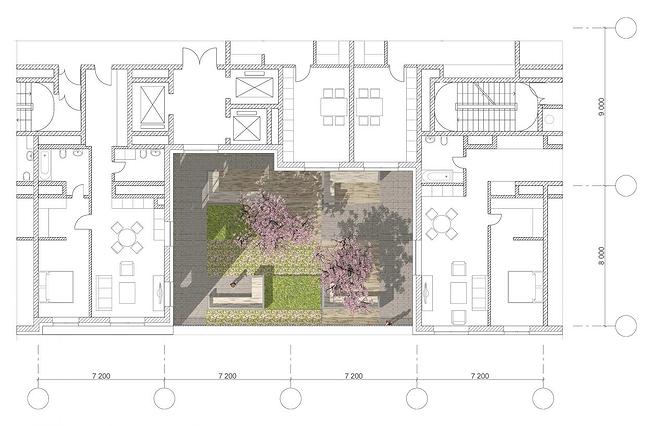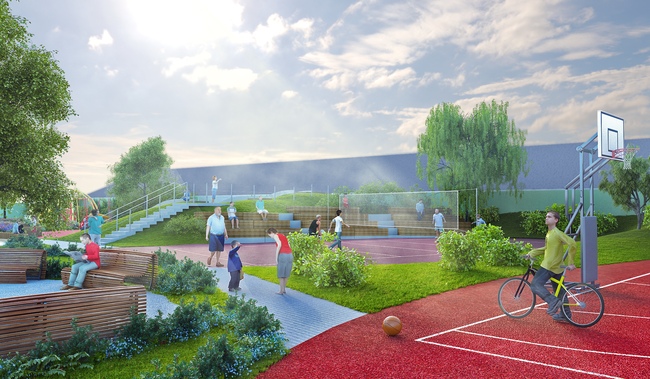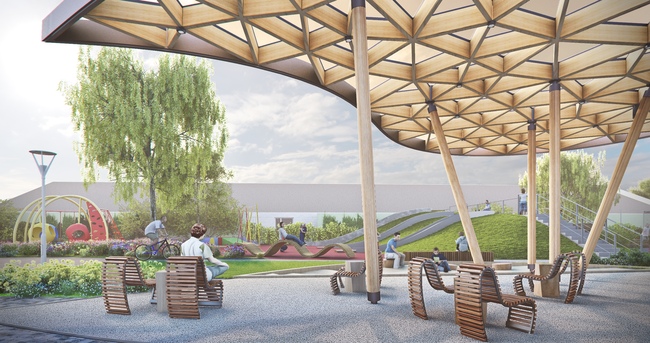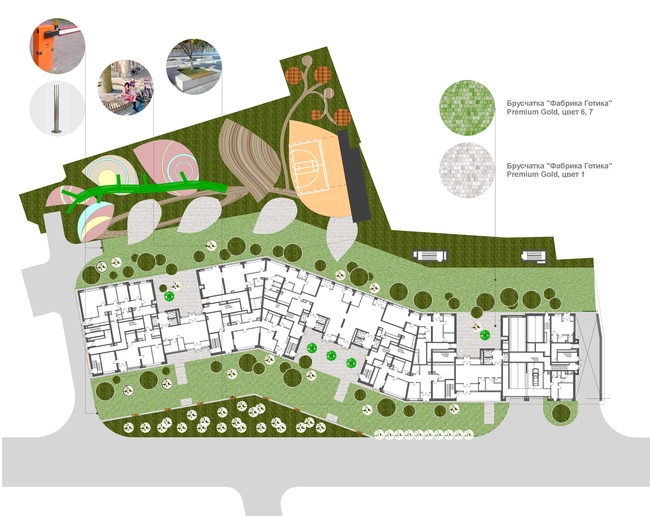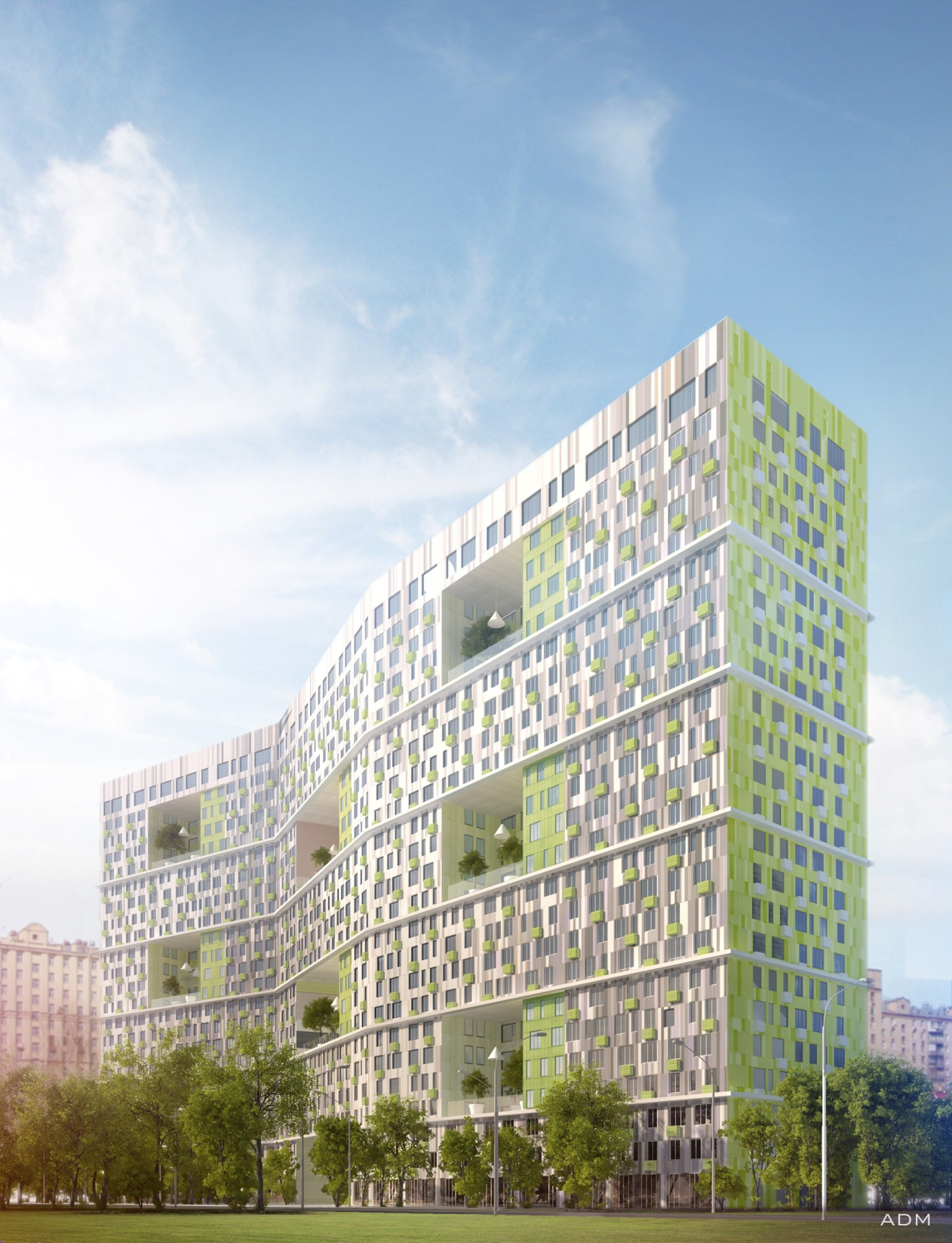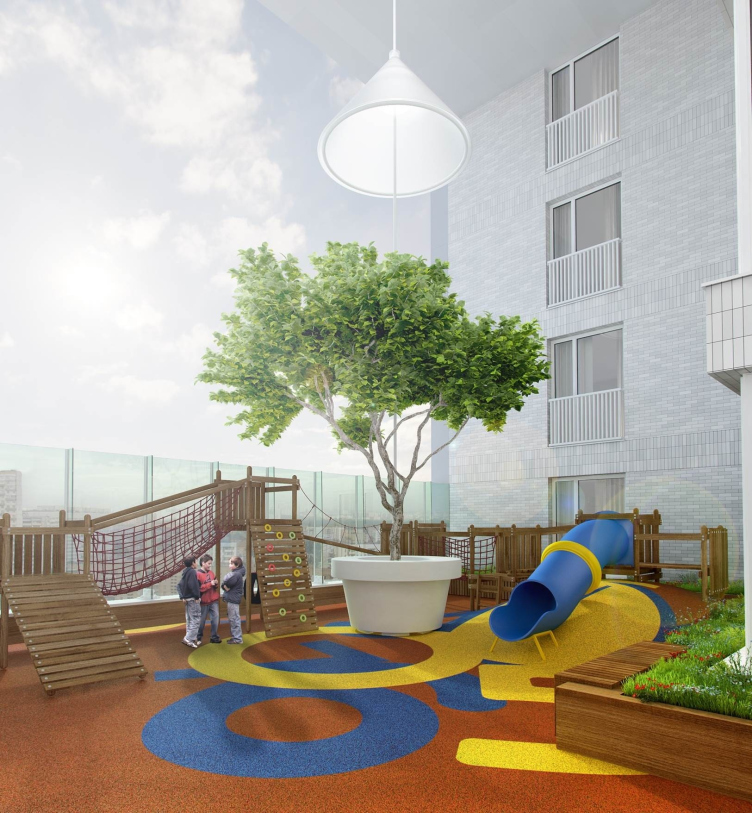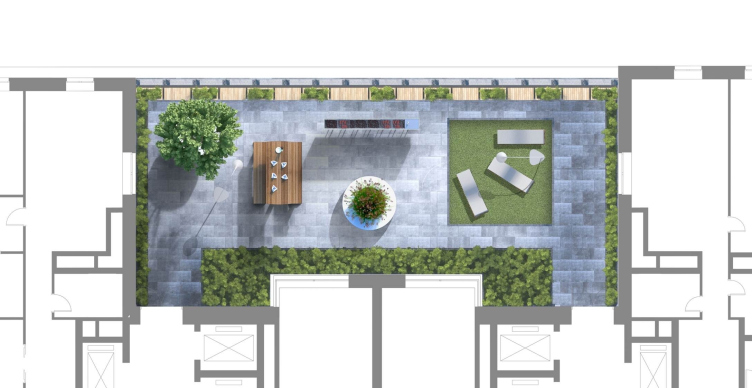A garden raised above the street has long since been the architects'
dream, and today the green roofs and terraces are to be seen in the design of
multistory buildings ever so often. In the midland climate that we have here,
however, creating fully-fledged green oases detached from the natural soil
requires very careful work on the "green roof" technologies - it is
common knowledge that many grand-scale ideas of "hanging gardens" in
Moscow were to remain forever on paper for this or that reason, even though
successful projects of green roofs and terraces are also known. Designing a
23-story house at the
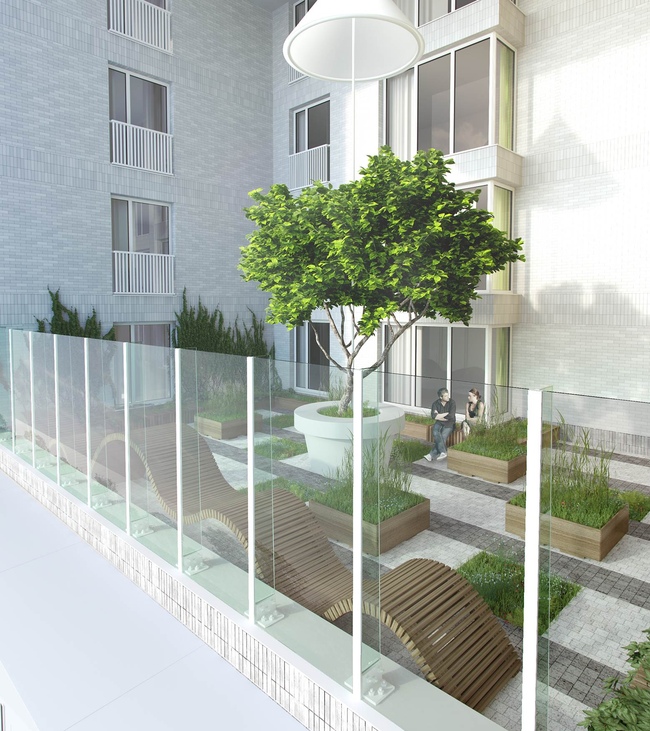
Garden yard
The architectural concept of this residential complex was covered by
Archi.ru two years ago: the "bent" curvilinear slab of the building
with deep "niche" yards inside of it struck many of our readers as a
bold attempt to humanize the very genre of multi-section block housing built in
a dense area of the megalopolis. Back then, however, this idea really looked but a concept, a beautiful
picture from a promo pamphlet, and believing into the actual implementation of
which in
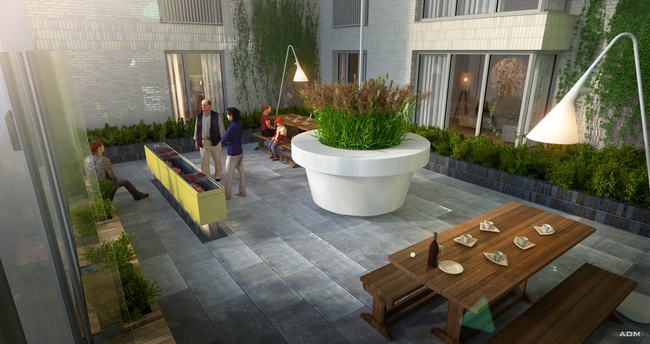
Barbecue yard
The "niches" four floors high each, are made on either side of the house, i.e., their depth is about half of the complex. Placing them in staggered order, the architects achieve the effect that each apartment gets a public space of its very own - in fact, these yards will unite the future apartment owners into small clusters. And in order to make these clusters as cozy as possible one needs green planting. And, even though placing trees and other plants in such giant "stanzas" will for the better part become adequate protection from the adverse weather and climate conditions, the architects still provided a few extra steps. On the one side, the terraces are equipped with heating systems, on the other side, it is planned that all the frost-resistant plants will be grown in the grass lawns and flowerbeds, while the heat-loving trees and shrubs - in tubs and containers. This way, in the cold wintertime it will be possible to carry them back indoors and thus protect them from the cold.

Yard/playground for children aged from 6 to 10
At the client's request, ADM made these garden yards different in terms
of their functions. Several typological solutions were developed: for baby
walking, teenage hangouts, quiet rest of the senior citizens, barbecue, kitchen
gardens, and general relaxation. In each of the three sections, three little
yards are provided, spaced by every four floors, the central yards being half
again as wide as the side ones. Up to the ninth floor, the building sports the
yards meant for the very young - both children and toddlers, while higher up
the architects organized the walking areas for the grown-ups - some of them are
meant for making picnics, others - for relaxation. The latter will shelter
those who like to contemplate flowers and wants grow them themselves: the area
of the garden is dissected in staggered order into stone-paved walks and square
seed beds; one can also rest on the wavy deck-chair.
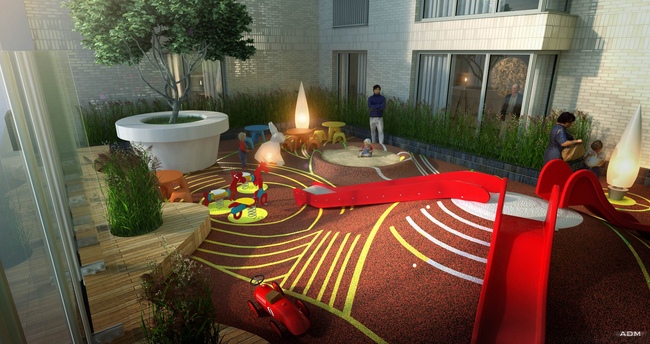
Yard/playground for children aged from 3 to 6
Besides the yards that are actually part of the house, the architects
also provided for the improvement of the adjacent territory. Its area is not
really large, and because of this it required particular attention because it
was planned to place a few sports and playgrounds upon it, as well as provide
for a maximally long and diverse walking area. For the implementation of this
plan, all the motor cars are foresightedly "hidden underground" -
they drive to the parking garage over the ramp, leaving the yard to the
pedestrians.
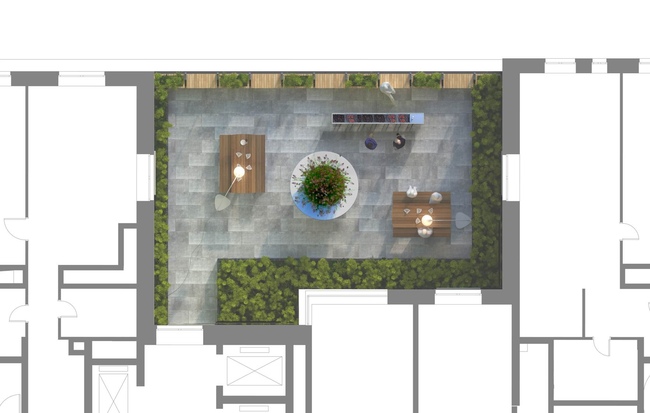
Side barbecue yard
As the graphic image of the improvement plan, the architects chose a branch with leaves and buds. The pattern is created by the shape and color of the coating of the walks, grounds, sandpits, and awnings, the coating materials being extremely diverse - grass, sand, paving flags, colored asphalt, wood flooring, and polymeric mats. Extra variety to the pattern of the yard is given by the openwork pergola awnings that cast lacy shadows, the plants being selected in such a way that the created decorative background looks nice indeed.

Central barbecue yard
